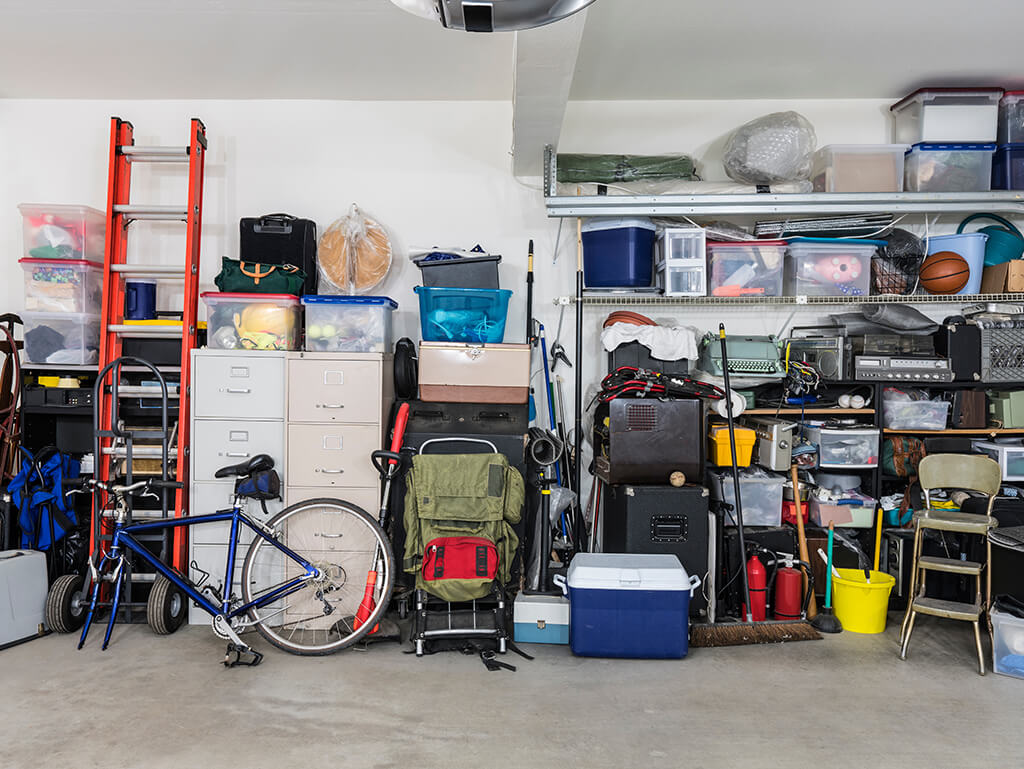Hoarding – The Problems It Can Create (And How to Prevent Them)
Hoarding is the act of storing too many items in a confined space, such as a home, apartment, or work facility. It shouldn’t be confused with clutter, a common but messy practice that’s done by many people. Instead, hoarding occurs when the amount of items inhibits or prevents normal movement in space. It can be the source of many problems and diseases caused by hoarding can become a reality.

In a hoarder’s home, for example, the occupant might be unable to open the front door normally, if at all. They would instead be forced to move items around to go inside and out or use another entrance that doesn’t entirely obstruct their movement.
Hoarding can become more severe, with extreme hoarders piling up trash, furniture, food, and plastic until it reaches the ceiling. These are called extreme hoarders.
To find out more about hoarding, the dangers that can manifest from it, diseases caused by hoarding, and solutions that can be done to prevent it, read the information below.
Diseases Caused by Hoarding

The diseases caused by hoarding are plenty. Think of the last time that you used the bathroom and imagine the number of bacteria you would find in the pipes of your plumbing. Living in severe hoarding conditions can be equivalent to swimming in a toilet.
This is due to the pathogens that are spread from the inevitable infestation of cockroaches, mice, and rats, all of which are notorious vectors for things such as e. Coli, salmonella, and even intestinal parasites. Cockroaches thrive under conditions that are dark, clustered, and moist, a common theme in the home of a hoarder.
Frequent bouts of food poisoning are the likely outcome in this situation, especially if hoarding takes place in areas where cooking and eating are done.
Hoarding can also lead to asthma. Asthma can flare up from the droppings and residue that cockroaches and other pests leave behind. Since it’s impossible to clean thoroughly in a hoarding environment, these remains can become airborne, spreading throughout the home and into the noses and throats of anyone that’s in it.
Children are especially sensitive to such dust particles and can suffer from breathing issues because of it. As hoarding leads to areas that are poorly ventilated, hantavirus disease could become a problem, which is caused by the presence of rodent droppings in a closed-off space without fresh air.
Fungal growth is also imminent when hoarding is done. Although there are fungal spores everywhere, they can grow in number when there’s little to no ventilation. Some may assume that fungal growth isn’t a problem until mold, mildew, and patches of stains are seen.
However, this isn’t the case. Fungal growth takes place at the microscopic level. Therefore, most of it can’t be seen with the naked eye until it reaches the flowering stage.
What Causes Hoarding?
Hoarding is caused by the people that live in the home where hoarding takes place. But the psychology of hoarding shows that things like depression and a host of different psychological disorders are often the reason. With many hoarders, such illnesses may go undiagnosed. Then there’s hoarding disorder.
Listed under Obsessive-Compulsive and Related Disorders in the DSM-5, hoarding disorder is separate from other mental illnesses. Here are some of the most common hoarding disorder symptoms:
- The frequent acquisition of items that one doesn’t need – Many hoarders have a compulsive need to buy things that aren’t needed and are large. Oftentimes, they buy items in bulk or don’t have adequate space to fit them, such as large pieces of furniture, piles of clothing, ornaments, and tables.
- Difficulty in parting ways with unused items – This is what creates the hoarding environment. The hoarder may keep things for sentimental value, holding on to pieces that they excuse by promising to fix or upgrade them at a later time. It’s common with electrical appliances, tools, and children’s toys. It can make the hoarder physically ill to throw things away, no matter how cheap or invaluable they are. In some cases, they create excuses for themselves, like failing to throw out large plastic bags or items no longer used for fear of getting rid of something they think is inside the bag that does hold value.
Unbeknownst to the hoarder, their depression can become more severe from keeping the items. There could also be an underlying issue, such as the death of someone close, a previous illness that leaves the hoarder partially unable to take care of themselves, or severe depression.
Furthermore, the diseases caused by hoarding can have their roots in some of the symptoms. A hoarder, for instance, may develop an obsessive-compulsive disorder that’s related to the items they pile up in their presence.
Signs of Hoarding

Here are some hoarding signs that shouldn’t be ignored:
- Denial that the problem exists – Hoarding can be addictive, where one feels physically and mentally unwell when forced to get rid of things. Many who hoard feel that there’s no problem, and may even have plans to one day clean up the mess that they create one. Denial can be very strong, to the point where hoarders may outright ignore the clutter and treat it as if it’s part of their home’s decoration.
- Fear of running out of items – Hoarders will keep items in large quantities for fear of running out of something they think is difficult to find or will be hard to find at a later date. They may view particular items as unable to be replaced, even if what they have is broken and can be purchased again. The excuses for this can range from the item no longer being made the same, to making plans for sending it back to the manufacturer.
- Dirty living conditions – As previously mentioned, the living conditions of a hoarder range from messy to filthy. It can become severe to the degree of it being hazardous for adults, pets, and especially children.
- Extreme disorganization – A hoarder might spend lots of time looking for things that are easy for others to find in a home, such as keys, money, and specific pieces of clothing.
- The hoarder’s home becomes unlivable – The living room, kitchen, closets, and bedrooms might be stacked with items that make it impossible for ordinary movement. In this setting, the hoarder may create tiny paths for themselves to move around. The movement might be so restricted, that every step must be carefully executed to avoid toppling over large pieces of furniture. It opens up the risk of a heavy object falling onto people.
- Poor animal conditions – Hoarders might also keep too many animals, such as dogs, cats, and aquariums.
As you can see, nothing on this list should be taken lightly. All of these things are significant life events that can cause a myriad of emotional/mental health issues. The only way back to any level of normalcy is through treatment.
How to Prevent Hoarding
The best way to prevent hoarding is to stop it long before it happens by regularly cleaning, throwing away items that can be replaced easily, and taking care to notice when ordinary clutter should be cleared. You could also hire a professional cleaning service to do the job for you.
Clutter Trucker is a cleaning provider, specializing in the removal of items from the home of hoarders.
They work diligently to remove all traces of hoarding and can give much relief to people that don’t have the time to throw out things on their own. Call them today and schedule a visit to take back control of your living space.
 720-982-7856
720-982-7856



